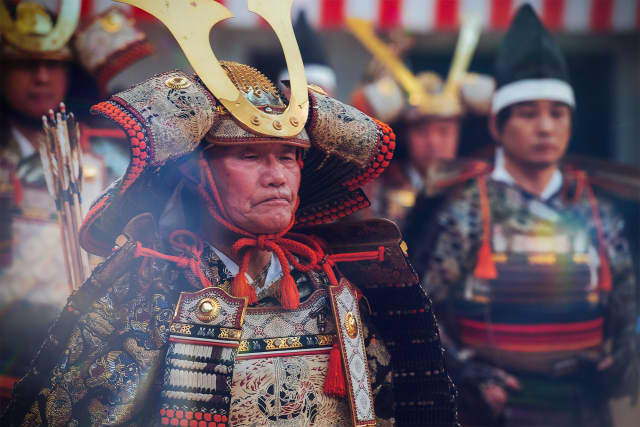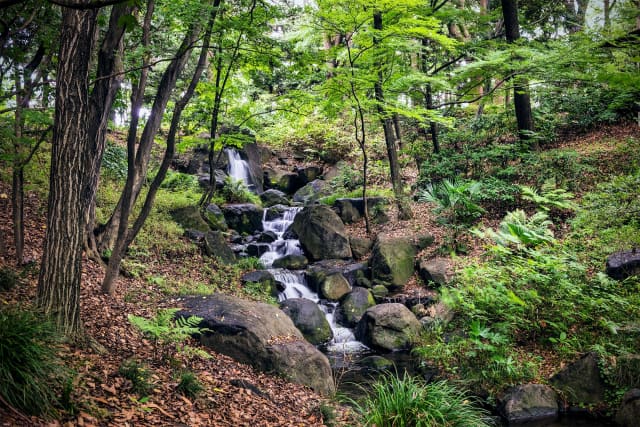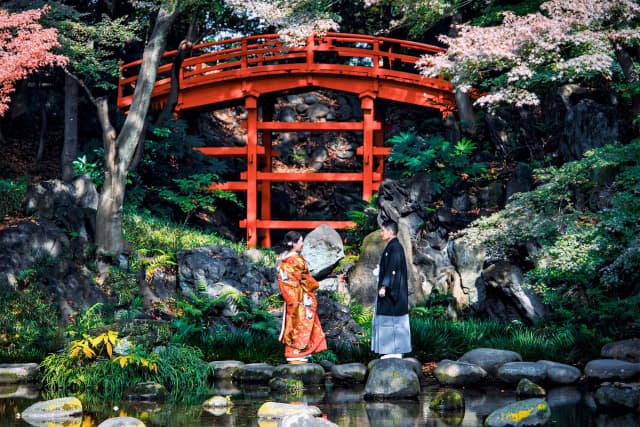The first period that interests us is the Yamato period, which ran from 250 to 710 CE. During these first centuries of development, Japan began to structure in the form of a state. The Kansai region in the south of Honshu, the main island of Japan, emerged as a political centre. In the middle of it, the city of Kyoto took off.
From the 6th century, Buddhism, which spread from China and Korea, upset the social and political life of the Japanese profoundly, while the arts were also strongly influenced.
Between the 8th and 12th centuries, imperial culture developed. If continental influences were still marked, little by little Japan was emancipating itself from them. As the figure of the Emperor became more widespread, the chiefs of clans took on more and more importance and whomever says clans, says conflicts between them. This instability caused great suffering for the people, while insecurity grew, resulting in the creation of a social class of fighters, the bushi, literally meaning the ‘gentleman warrior.’
It's important not to confuse bushi and samurai. The former generally designates all those who carried the katana (Japanese sword) and made combat a way of life. The second designates bushi of high social rank, employed by the nobility, while a third category, the ronin, designates the samurai who had no master. Thus a samurai could have become a ronin when his master died, for example.
To complete this simplified glossary before diving back into the history of Japan, we must define what a ninja is. This is a type of warrior who specialises in unconventional combat, such as infiltration, sabotage and assassination.
The periods that particularly interest us were still to come and had their roots in the Japanese Middle Ages which extended from the 12th to the 16th centuries. Following the Genpei War in 1185, Japan found itself under the control of a government outside the imperial court: the bakufu, which was based in the Kantō region, still in Honshu but in an area that sees Tokyo at its centre today.
The bakufu was a warlike government, at the heart of what historians call the Kamakura period. This period, which began in 1185 and ended in 1333, saw the political advent of the Kamakura shogunate. This was the first part of the Middle Ages. In the second part, the Sengoku period, or period of the warring provinces, put an end to the Middle Ages. It was marked by great turbulence and chronic instability, both social and political. Military intrigue and conflict were permanent.
Japan was fragmenting, each province being placed under the control of a daimyō (‘great name’), which one could compare to counts, dukes or European lords. In this disturbed context, political reunification, which seemed impossible, was nevertheless achieved thanks to several successive military leaders: Oda Nobunaga, Toyotomi Hideyoshi and then Tokugawa Ieyasu. The third used the whole panoply of intrigue to achieve their ends.
This period of Japanese history was particularly dark and violent. It corresponds to the golden age of the samurai, who developed an incredible catalogue of fighting techniques on horseback, in armour, with or without weapons, in hand-to-hand combat and more. These warriors, later idealised in the collective imagination, were often bloodthirsty and had few scruples about massacring their opponents and even the civilian population, for gains of territories and wealth, as was also the case in Europe elsewhere.
Security no longer existed. Samurai, ronins and ninja were waging merciless wars. Groups of Ikkō-ikki were also involved, composed of peasants, Buddhist monks, Shinto priests and local Japanese nobles without wealth, who rose up against the authority and the violence of the samurai.
It is therefore in this maelstrom of violence that were born most of the combat techniques that will be found in the various jūjutsu styles, with the sole objective to put the opponent out of harm's way and in most cases to kill them.
After 150 years of civil war, Japan finally regained peace. The era of the Tokugawa shogunate opened at the very beginning of the 17th century, it would be called the Edo period. At first, openness to foreign countries was encouraged but little by little the government of Japan closed in on itself and the borders were shut, the country became isolated. Despite everything, this isolation corresponded to strong demographic and economic growth until the beginning of the 18th century. Neo-Confucianism from China structured life in society. New artistic forms appeared, such as the kabuki, which can still be admired today.
Part of the population was nevertheless subject to deep questioning: the Japanese warriors, samurai and other ronins and ninja, what to do with them? Their reason for living, combat, having disappeared, they had to find a new way. They decided to concentrate on the philosophical dimension of combat, on that of belonging to a caste, on honour and loyalty. We started to see the development of notions such as the bushido of the warriors and the buke-shô-hatto of the samurai.
Already mentioned in the past but sometimes contradicted by the facts, it was therefore from the beginning of the 17th century that bushido, ‘the way of the warrior,’ (bushi meaning ‘brave warrior’ and dō, ‘the way’) made its full entry into the fighter's panoply.
The influences were many. There was the code of life borrowed from Buddhism, among which stoic endurance, respect for danger and death were fundamental values. Shintoism strengthened the religious worship of the fatherland and the emperor, while Confucianism supported literary and artistic culture as well as the social morality of relationships.
When Jigoro Kano was finally born in 1860, Japan was about to fall into the Meiji era, which lasted from 1868 to 1912. The Meiji era was characterised by the end of Japan's policy of voluntary isolation and the beginning of a policy of modernisation of the country. The feudal system was over, Japan was opening up to Western-style industrialisation.
This historical reminder is important because it allows us to understand the context in which Kano was born and lived the first years of his life. Obviously, he was strongly influenced by the history of his country, as well as that of all of Asia. If at first he had this fighting spirit of the samurai, while he sought to be able to defend himself against the harassment of which he was the target, very quickly he understood that the philosophical dimension of the martial arts was the key to harmonious development of society. The generations which had preceded him, had invented the technique, then the philosophy and the morality and he cemented the combination of all: JUDO, the gentle way.







